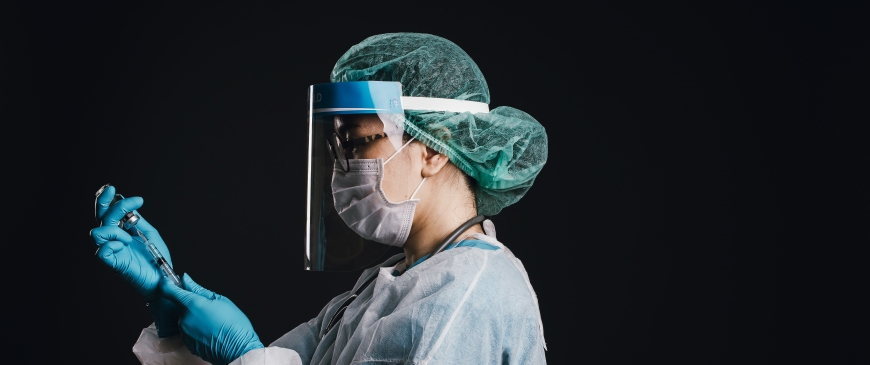
Onshoring is no panacea for EU medical supplies
The COVID-19 crisis has highlighted weaknesses in Europe’s medical supply chains, particularly its reliance on imports from China and elsewhere. The answer, according to some politicians, is simple: companies should be forced to make vital medical products within the European Union. But this would not make the Union any less vulnerable to supply shocks. Instead the EU should focus on gathering more data on supply chain risks and deepening regulatory co-operation with key countries. Only in specific instances should it consider providing financial incentives for companies to diversify production and sourcing.
The pandemic has put huge pressure on the trade in medical products. Global Trade Alert, a group that monitors global protectionism, estimates that across 86 jurisdictions, 157 export controls on medical supplies and medicines have been implemented since the start of the outbreak. Europe has faced notable problems obtaining ventilators from China and paracetamol from India. Some countries have even had to contend with being gazumped by the US on the market for personal protective equipment (PPE).
However, the case for onshoring--making European companies move production to the EU—is undermined by the fact that the EU is already one of the biggest global producers of medical products, and the biggest exporter. Europe does import the majority of its PPE from China, but the vast majority of its imported medical products particularly pharmaceuticals, come from the US ($47 billion) and Switzerland ($35 billion). Yet, if you look at the quantity of imports, rather than the value, the importance of imports of pharmaceuticals from India skyrockets, due to it being the source of a large amount of low-value, but important, generic medicines and active ingredients.
Onshoring production of generics, active ingredients and PPE would make them more expensive due to Europe’s higher wage costs. Nevertheless, the COVID-19 crisis has shown Europe risks being left exposed when production of certain essential medical products is concentrated in a few countries. To tackle this, the EU must first find the weak links in its medical supply chains, and work with producers to ensure any response is based on accurate data. The European Medicines Agency (EMA) has started this process, by monitoring shortages of pharmaceuticals. It should expand its coverage to other medical products, and may need more funds to do that.
Where tariffs have recently been removed to facilitate the import of vital medical products, they should not be reinstated. Trade economists Simon Evenett and Alan Winters propose a multilateral bargain whereby tariffs are not reinstated and in exchange exporter countries make binding commitments not to implement export curbs in a crisis. This is a sensible approach, but tariffs are not the biggest issue: they are already zero-rated for most medical products. The EU’s main priority should be increasing regulatory co-operation with its trade partners, so that imports during an emergency meet EU safety standards. Many Chinese-made ventilators and masks failed to do so. The EU should build on existing engagement with Chinese and Indian regulators, with the ultimate prize being a mutual recognition agreement covering good manufacturing practice for pharmaceuticals and medical products.
The EU cannot ignore the UK’s role in its medical supply chains. Britain is likely to be competing with China to be the third-biggest supplier of medical products to the EU after Brexit. It is in the EU’s interest to engage with the UK’s request for a free trade agreement that would include enhanced provisions allowing for mutual recognition of good manufacturing practice in pharmaceuticals and medical equipment, batch certification, good clinical practice and information-sharing arrangements.
To avoid future shortages, the EU should expand its stockpile of medical equipment, and the European Commission should be responsible for releasing supplies to countries in need. That would reduce the incentive for member-states to restrict exports to each other as they did in the early phase of the outbreak.
An EU stockpile will also create an opportunity for targeted intervention. Diversifying supply chains is expensive for companies, and the cost of reconfiguring them will either fall on consumers or governments. Japan has set aside $2 billion to help its companies move the production of vital products out of China and into Japan and the wider ASEAN region, but the response has been muted. An alternative approach could see the EU only buy medical products for its stockpile from companies that are able to show that their supply chain is resilient to shocks, including by not being overly exposed to one country or region. The EU should be prepared to pay a premium for such a service.
Finally, the EU must consider its global role as it tries to strengthen its medical supply chains. It cannot very well claim to be a beacon of openness and multilateral co-operation if it chooses to look inwards and rely exclusively on its own resources in a crisis. There is much that can and must be done to strengthen Europe’s medical supply chains and avoid future shortages in an emergency – forcing firms to move their production to the bloc is no panacea.
Sam Lowe is a senior research fellow at the Centre for European Reform.
